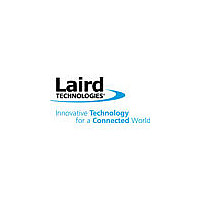TC-14-MQ-70 Laird Technologies, TC-14-MQ-70 Datasheet - Page 18

TC-14-MQ-70
Manufacturer Part Number
TC-14-MQ-70
Description
MODULES TEA/TEM ACCESSORY
Manufacturer
Laird Technologies
Series
TCr
Datasheet
1.LE-80.pdf
(20 pages)
Specifications of TC-14-MQ-70
Accessory Type
Temperature Control
For Use With/related Products
Thermoelectric Assemblies
Lead Free Status / RoHS Status
Lead free / RoHS Compliant
Heat Pump (Refrigerator) Peltier (1834)
The thermoelectric Peltier effect is the most direct
way to utilize electricity to pump heat. Electric
current (work input) forces the matter to approach
a higher energy state (black dots) and heat is
absorbed (cooling).
The energy is released (heating) as the matter
approaches a lower energy state (white dots). The
net cooling or heating effect is proportional to the
electric current and Peltier coefficient.
Power Generator Seebeck (1822)
Thermoelectric material can also be used to gene-
rate electricity. Some of the heat input is conver-
ted to electric current (work), as the higher energy
matter (black dots) releases energy and cools to
a lower energy state (white dots). The net work
is proportional to the temperature difference and
Seebeck coefficient.
Thermoelectric modules
The material used at working temperatures up
to 150ºC is normally bismuth telluride, doped to
obtain p (positive) and n (negative) semi-conduc-
ting properties.
A number of pn-couples, thermally parallel and
electrically in series, are sandwiched between
ceramic plates.
The maximum temperature differential (∆T max )
between the cold and the warm side of a
Supercool single stage module is up to 75ºC at
warm side temperatures of 25ºC or ∆T = 85ºC at
a warm side temperature of 50ºC. By increasing
the number of stages in a multistage arrang-
ement, you also increase maximum ∆T.
Work in
Thermoelectrics and how it works
Single stage
Waste heat out
Heat out
Heat in
Cooling
Multistage
Work out
Guidelines for selecting your TE system
Below you see different types of TE assembly principles and how they can be employed. What type of
assembly is suitable for your application?
AA = Air to Air system
Air in an enclosure is cooled and the heat is
dispersed to the surrounding Air.
DA = Direct to Air system
Solid surfaces are cooled Directly and the
heat is dissipated to the surrounding Air.
LA = Liquid to Air system
The Liquid circuit is cooled gradually and
the heat is dispersed to the surrounding Air.
Heat transfer methods
The Cold Side can be designed as follows:
A = Air cooling. D = Direct cooling of solid.
L = Liquid cooling. The warm side is normal-
ly cooled by an Air heat sink (A). However,
Liquid heat sinks (L) can be used when you
need a compact system or in a laboratory,
for example, where process water is available.
All our heat sinks are made of aluminum
extrusions with excellent thermal transfer.
Furthermore, anodization provides supe-
rior environmental protection. And if your
application calls for custom designed heat
exchangers, be sure to ask us. They’re avai-
lable on request.
For a detailed description of our assembly product code, please visit our website.
HEAT TRANSFER
T E C H N I CA L IN FO R M ATI O N
HEAT TRANSFER
18
COOLING POWER
VOLTAG E
Cooling (heating) power
When you know the cooling power (P c )
needed at a maximum specified tempera-
ture difference (∆T) in your application, you
can select the correct size and type of TEA.
For information on cooling power versus
∆T, we refer you to the diagrams for each
assembly type.
According to th e Carnot principle, heating
power: P h = P c + Power input. You’ll find
the power input in the respective product
specifications.
When a ∆T greater than the capacity of
single stage systems is required, we supply
assemblies with 2-stage TE modules. More
or less any cooler can be cascaded on
request.
AL = Air to Liquid system
Air in an enclosure is cooled and the heat is
dissipated to the Liquid from a tap.
DL = Direct to Liquid system
The solid surface is cooled Directly (it can
then cool any other substance). The heat is
dispersed to a Liquid.
LL = Liquid to Liquid system
The Liquid circuit is cooled gradually and
the heat is dispersed to a Liquid.
FAN S
COOLING POWER
TEMPERATURE CONTROLLERS

















